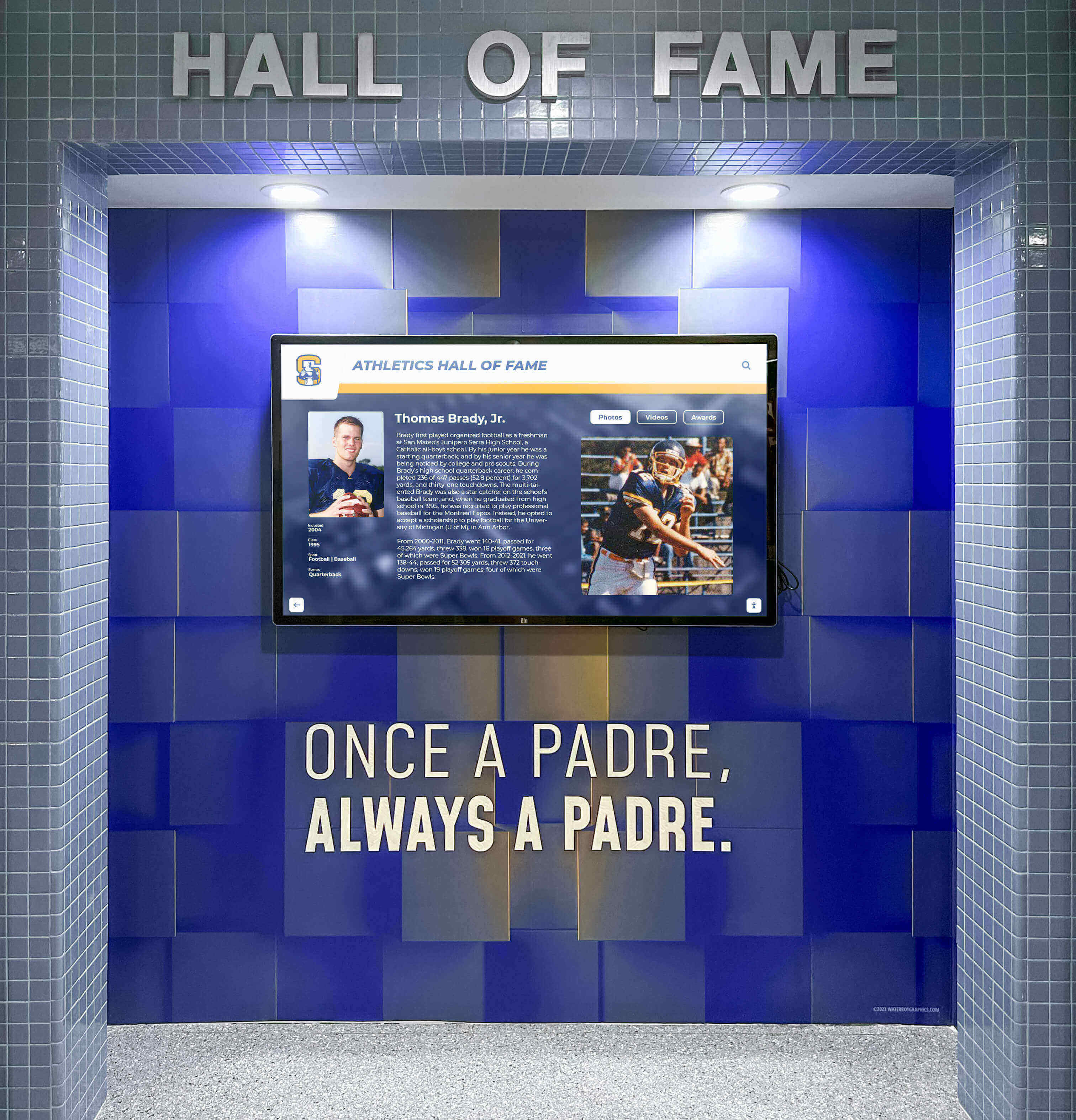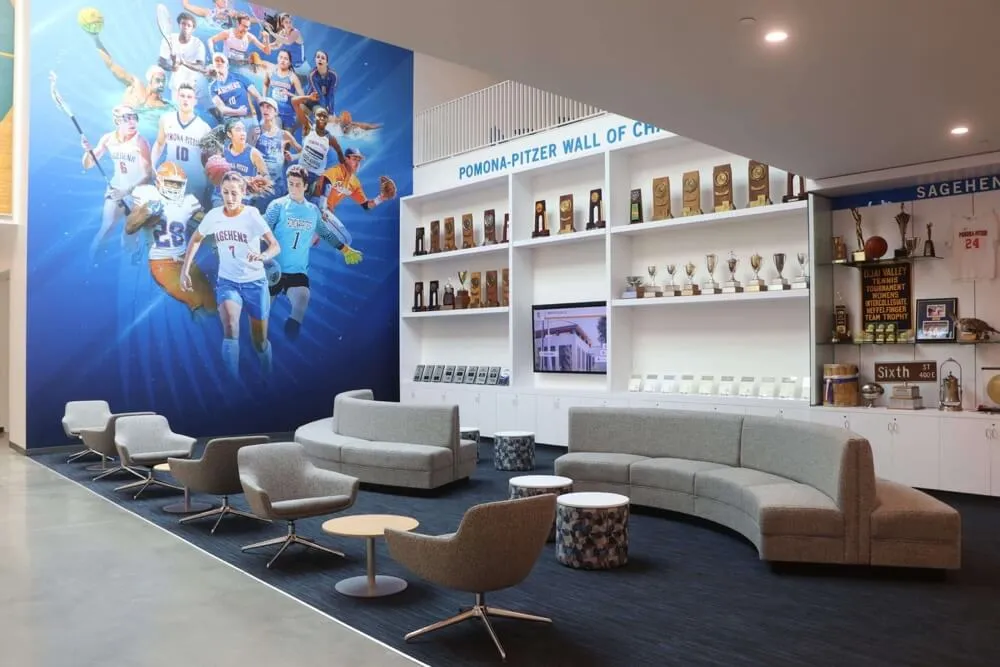Key Takeaways
Discover how Massachusetts high school hockey programs use touchscreen recognition displays to celebrate championships, honor athletes, and preserve program tradition through modern digital technology.
Massachusetts High School Hockey: A Tradition of Excellence
Understanding the depth of Massachusetts hockey tradition provides context for why comprehensive recognition matters so profoundly to Bay State programs.
The Hockey Culture in Massachusetts
Massachusetts ranks among America’s premier hockey states, with competitive high school programs developing talent that reaches the highest levels of amateur and professional competition.
Historical Foundations:
Massachusetts hockey tradition extends back generations, with programs in Boston and surrounding communities establishing competitive excellence long before high school hockey became popular nationally. The state’s proximity to college hockey powerhouses like Boston College, Boston University, Harvard, and Northeastern creates visible pathways from high school through elite collegiate competition.
Competitive Landscape:
- Multiple divisions organized by school size and competitive level
- State tournament structure creating championship opportunities across divisions
- Historic rivalries that define programs and energize communities
- Catholic Conference and other private school leagues featuring intense competition
- Public school tournaments showcasing talent across the Commonwealth
College hockey history demonstrates the pipeline Massachusetts high school programs feed, with Bay State players consistently starring at the NCAA’s highest levels.
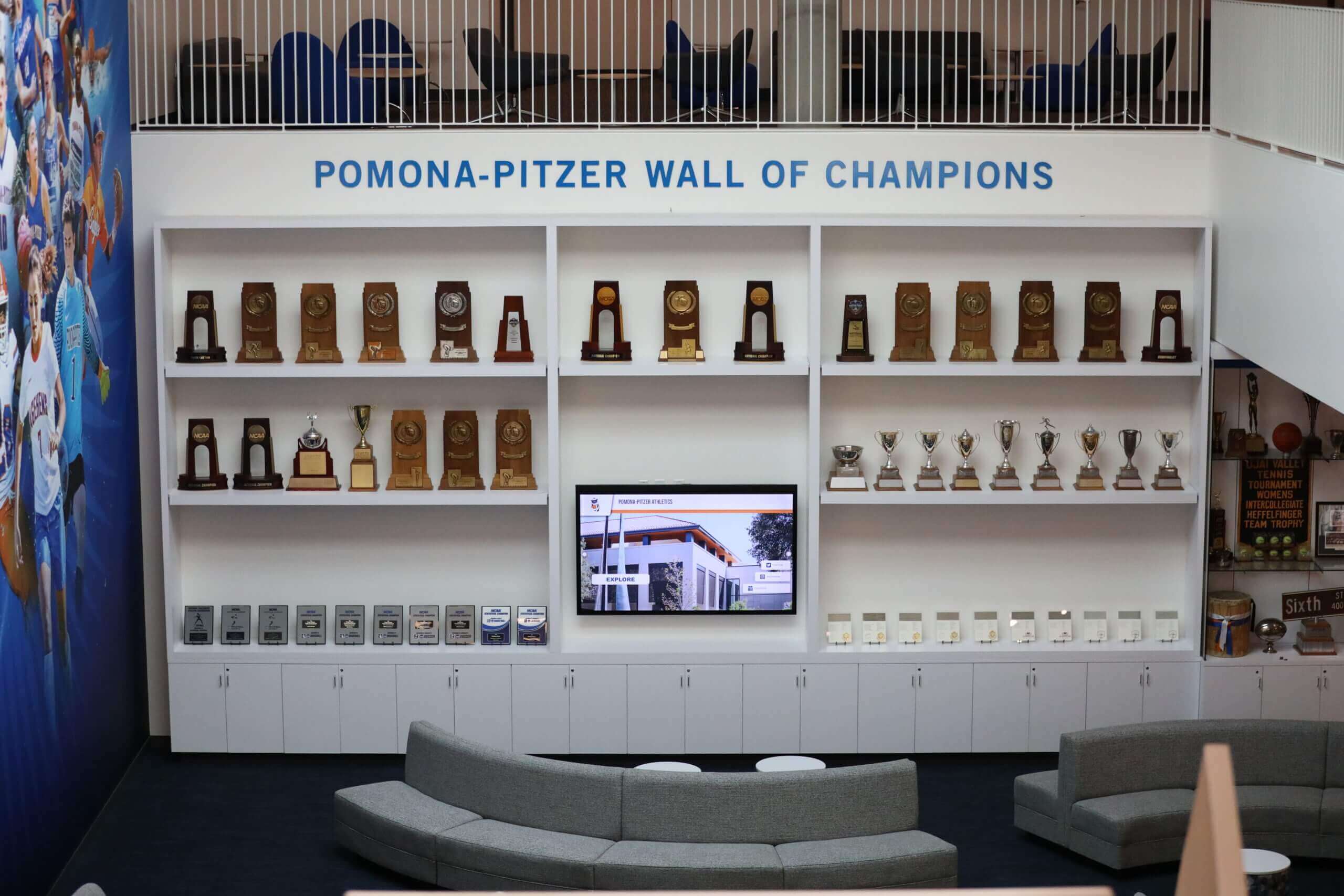
Notable Massachusetts Hockey Programs
Certain Massachusetts programs have established legendary reputations through sustained excellence, championship success, and development of elite talent.
Historic Boston-Area Powerhouses:
Programs like Catholic Memorial, Malden Catholic, St. John’s Prep, Austin Prep, and Boston Latin have produced multiple state championships while developing players who competed at Division I colleges and beyond. These programs benefit from deep hockey culture, excellent facilities, and communities that prioritize athletic excellence alongside academic achievement.
Central Massachusetts Excellence:
Shrewsbury, Algonquin Regional, Wachusett Regional, and other central Massachusetts programs have emerged as consistent contenders, challenging traditional Boston-area dominance while building their own championship traditions and developing college-level talent.
North Shore and South Shore Competitors:
Programs across Essex, Plymouth, and Bristol counties contribute significantly to Massachusetts hockey excellence, with schools developing competitive teams that regularly advance deep into state tournament play.
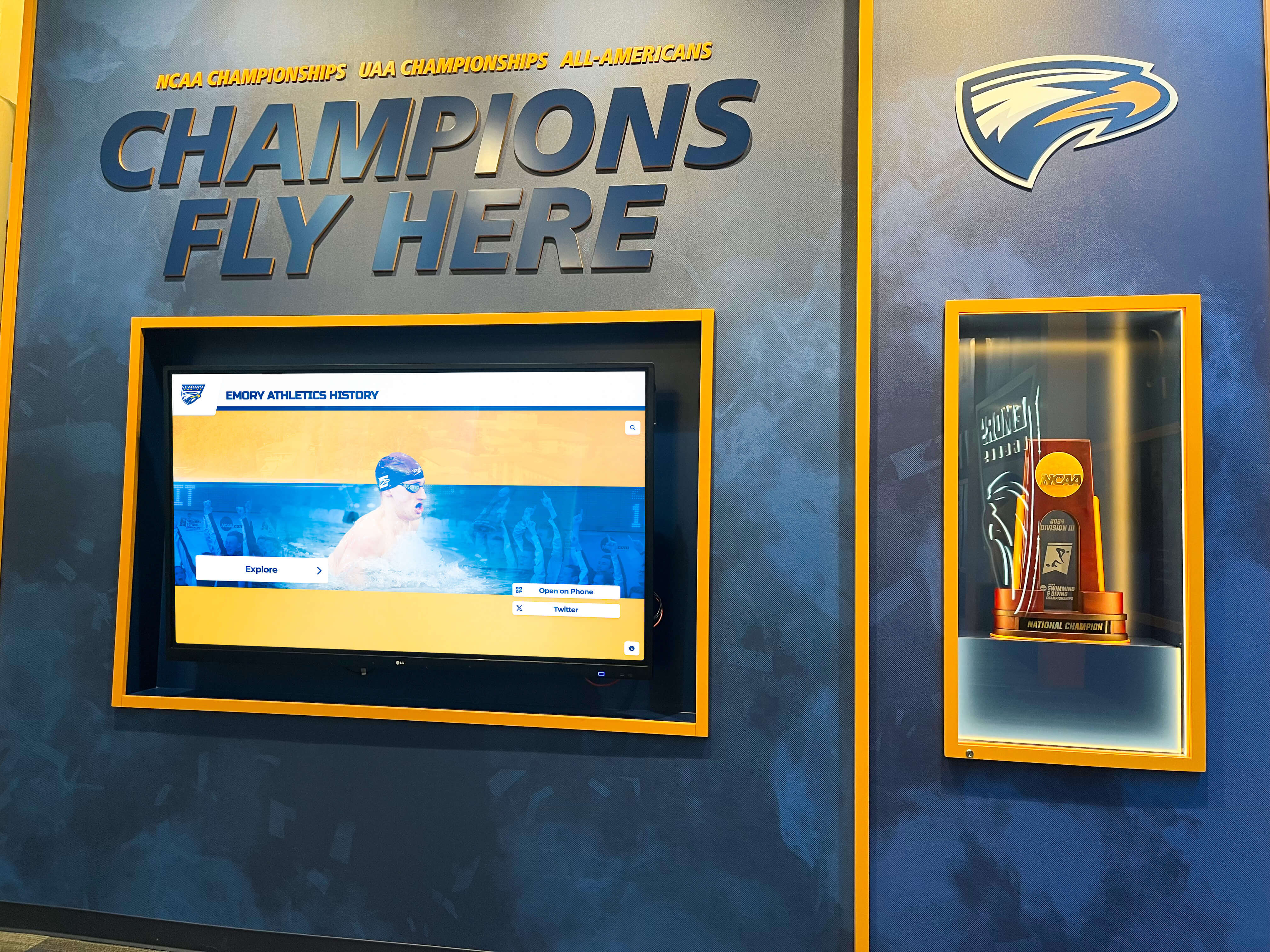
Why Touchscreen Recognition Matters for Massachusetts Hockey
Comprehensive recognition creates tangible benefits extending far beyond simple acknowledgment of past achievement.
Preserving Program History and Tradition
Massachusetts hockey programs accumulate decades of history including championships, all-state players, record holders, and memorable moments that define program identity.
Historical Documentation Challenges:
Traditional recognition approaches face inherent limitations. Physical trophy cases fill quickly, becoming cluttered and difficult to navigate. Plaques crowd gymnasium walls until space constraints force difficult choices about what receives recognition. Yearbooks and paper records deteriorate while remaining inaccessible to most community members. Important achievements risk being forgotten simply because physical space limitations prevent appropriate display.
Digital Solutions:
Touchscreen recognition systems eliminate space constraints entirely. Programs can showcase comprehensive history including every championship team, every all-state selection, every record holder, and every significant achievement without worrying about physical display limitations. Interactive alumni displays enable unlimited content capacity that grows alongside program tradition.
Inspiring Current Players Through Visible Excellence
When Massachusetts hockey players see tangible evidence of program excellence—championship banners, all-state recognitions, college commitments, professional achievements—abstract aspirations transform into concrete, achievable goals.
Aspirational Impact:
Current players walking past recognition displays daily encounter:
- Names and faces of players who achieved elite levels
- Detailed profiles showing development pathways from freshman through senior seasons
- College commitment information demonstrating realistic next-level opportunities
- Championship rosters proving that ordinary students can achieve extraordinary success
- Record boards showing achievable performance benchmarks
This constant exposure to program excellence creates culture where high expectations become normalized rather than exceptional.
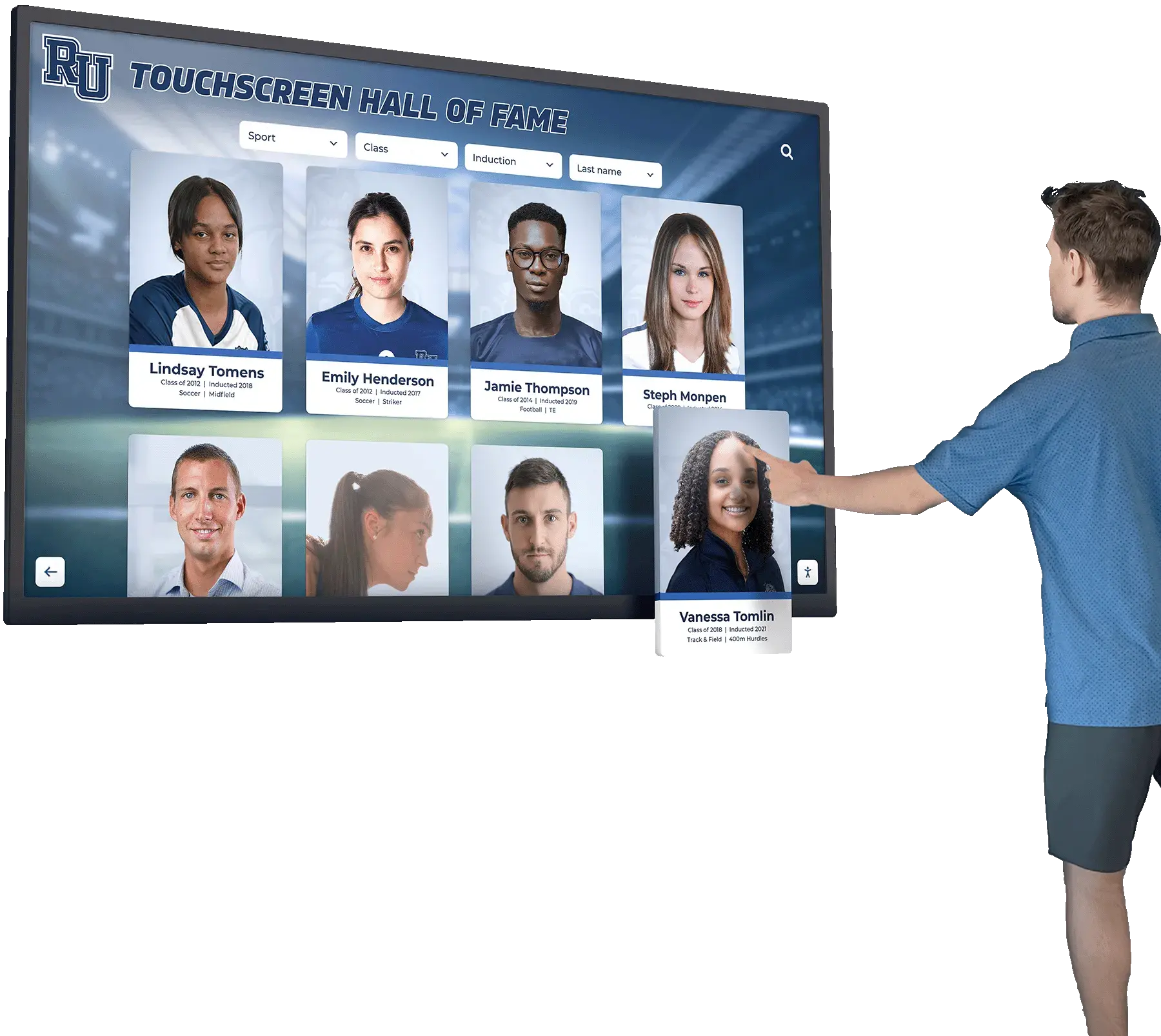
Strengthening Alumni Engagement and Community Pride
Massachusetts communities invest tremendous passion in high school hockey, with programs serving as sources of town identity and pride across generations.
Alumni Connection:
Comprehensive recognition creates touchpoints for continued alumni engagement:
- Former players see their achievements honored appropriately
- Alumni can explore their recognition profiles online from anywhere
- Recognition ceremonies bring alumni back for special events
- Social media sharing extends recognition reach far beyond campus
- Maintained connections support fundraising and program development
Community Identity:
Hockey success strengthens entire community identity, particularly in smaller Massachusetts towns where high school sports unite residents across demographics and generations. Prominent recognition demonstrates institutional commitment to celebrating collective achievement while honoring individual excellence.
Supporting Recruitment and Program Development
In Massachusetts’s competitive high school hockey landscape, programs compete intensely for top youth hockey talent deciding between public schools, Catholic Conference programs, and prep school options.
Recruitment Benefits:
When prospective players and families visit facilities during recruitment, prominent recognition displays immediately communicate:
- Program history and championship tradition
- Development track record producing college and professional players
- Institutional commitment to celebrating athletic achievement
- Professional-caliber facilities and support systems
- Culture that values and honors excellence
These visible demonstrations influence commitment decisions in competitive recruiting battles.
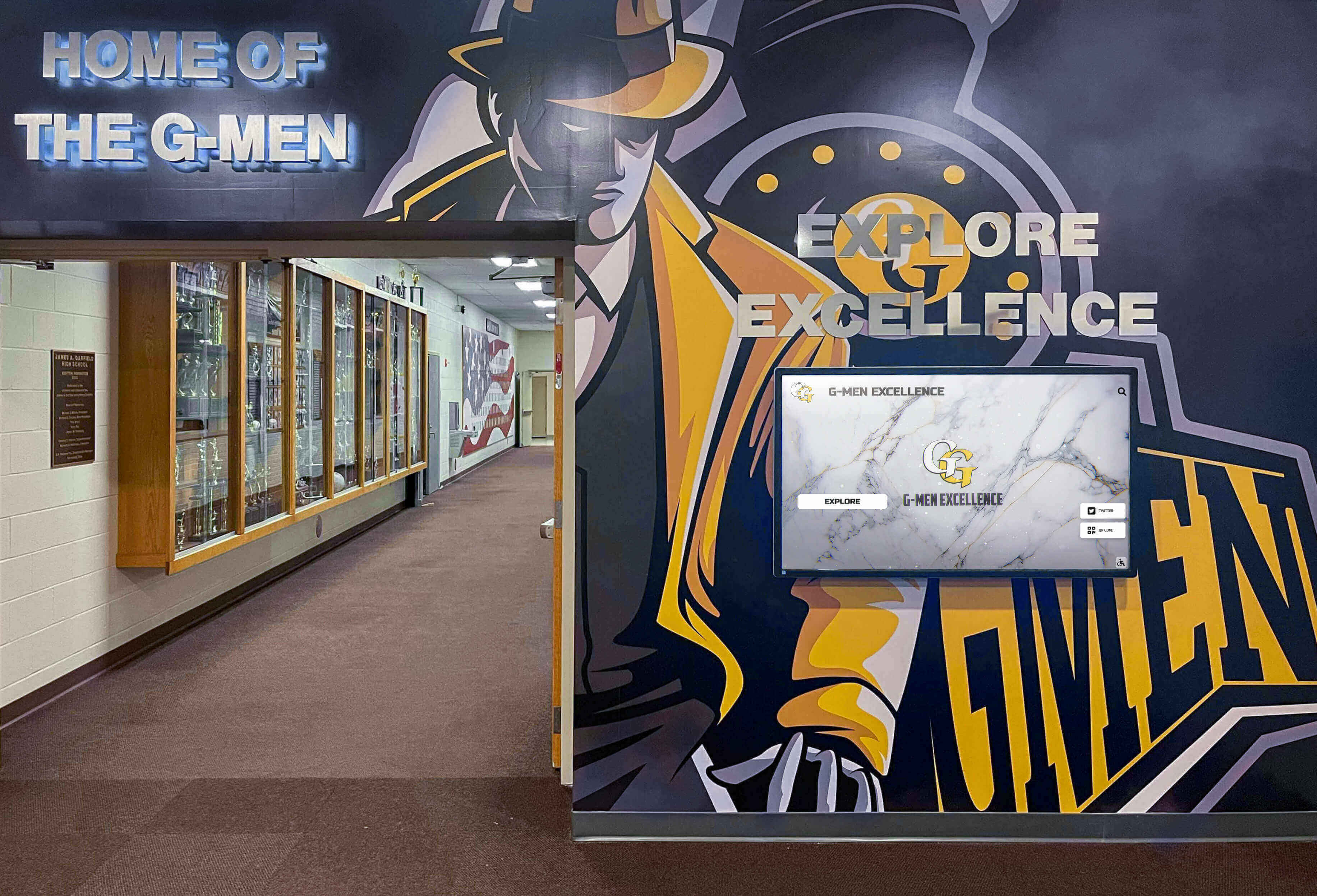
Touchscreen Technology: Modern Recognition for Massachusetts Hockey
Digital touchscreen displays offer capabilities impossible with traditional recognition approaches, transforming how programs celebrate achievement.
Unlimited Content Capacity
Space constraints disappear with digital recognition systems designed for comprehensive athletic celebration.
Comprehensive Recognition:
Single touchscreen displays can showcase:
- Unlimited player profiles with photos, statistics, and achievements
- Complete championship team rosters with season narratives
- Decade-by-decade program history timelines
- Record boards automatically tracking all-time and single-season leaders
- College commitment databases showing pipeline to next level
- Coach profiles honoring those who built program tradition
This unlimited capacity ensures no achievement goes unrecognized due to physical display limitations.
Rich Multimedia Integration
Modern touchscreen systems integrate multiple content types creating engaging experiences impossible with static displays.
Content Types:
- High-resolution photography: Action shots, team photos, ceremony images, facility evolution documentation
- Video highlights: Championship game footage, player interviews, coach reflections, season retrospectives
- Statistical databases: Searchable records, season-by-season statistics, career leaders, comparative analytics
- Interactive timelines: Chronological program history exploration, decade-specific achievement filtering
- Live updates: Current season statistics, real-time game scores, upcoming schedule information
Historic hockey achievements come alive through multimedia storytelling that static plaques cannot match.
User-Friendly Interactive Features
Intuitive touchscreen interfaces require no instructions—visitors naturally explore through familiar smartphone-like gestures.
Navigation Features:
- Powerful search: Find specific players, seasons, or achievements instantly
- Filtering options: Sort by decade, position, achievement type, or season
- Related content: Automatic linking between connected achievements and individuals
- Social sharing: Direct integration enabling visitors to share profiles
- Accessibility: Features supporting visitors with various abilities
These intuitive features encourage extended exploration beyond passive viewing of traditional displays.
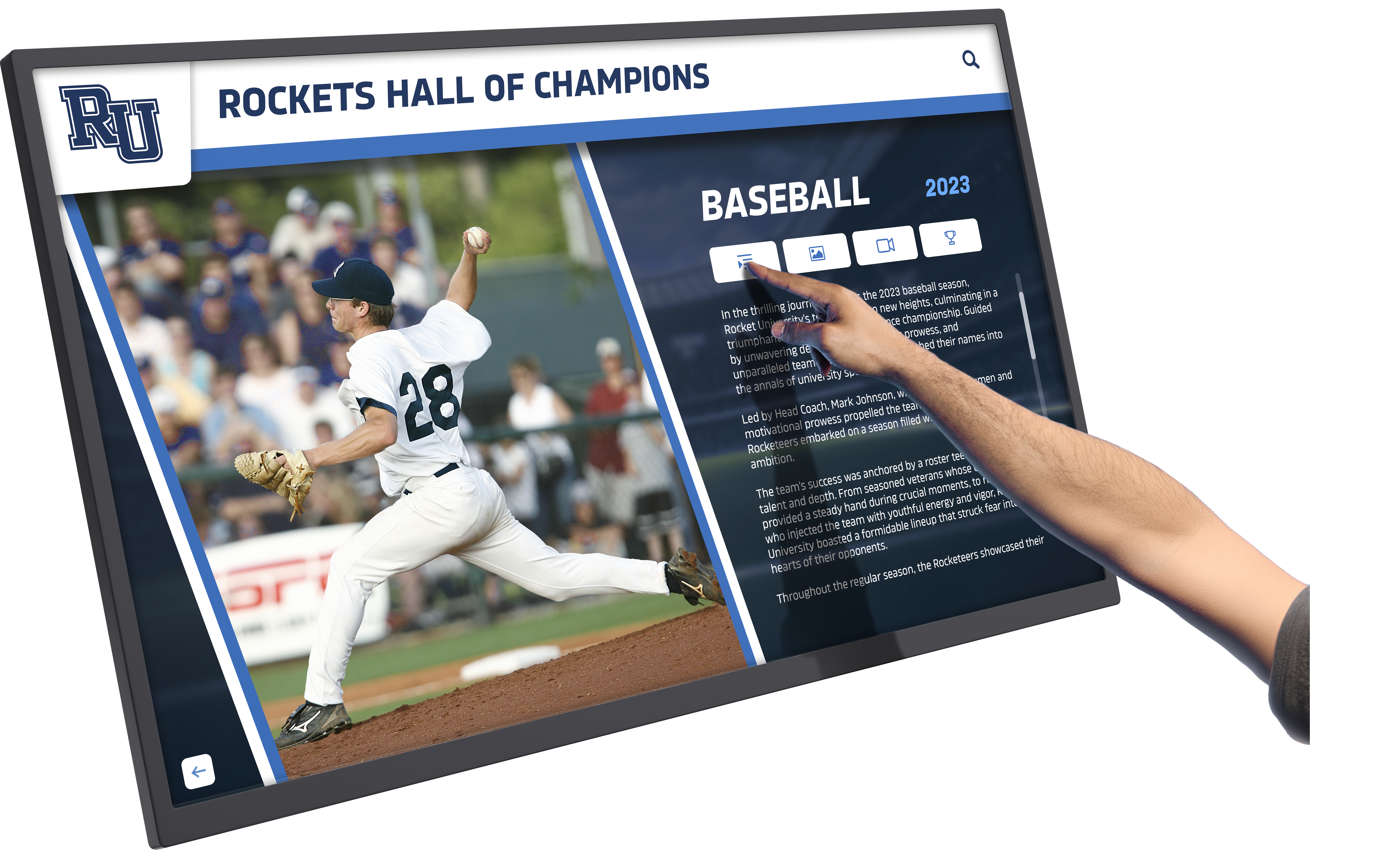
Easy Content Management
Non-technical staff can maintain touchscreen displays through user-friendly content management systems requiring no coding expertise.
Management Capabilities:
Modern platforms like Rocket Alumni Solutions provide:
- Web-based administration accessible from anywhere
- Drag-and-drop content organization
- Template-based profile creation ensuring consistency
- Bulk upload capabilities for photos and information
- Real-time preview before publishing changes
- Role-based access for multiple administrators
- Automatic backups preventing content loss
- Mobile access for updates from any device
This ease of use ensures recognition stays current without requiring dedicated IT support or external consultants for routine updates.
Implementing Touchscreen Recognition: Planning and Best Practices
Massachusetts hockey programs creating or enhancing recognition systems should follow systematic approaches ensuring successful outcomes.
Defining Recognition Scope and Criteria
Clear criteria prevent confusion while establishing consistent standards across program history.
Common Recognition Categories:
- Championship teams: State, conference, tournament titles with complete rosters
- All-state selections: Hockey Writers’ Association honors across divisions
- Record holders: Career and single-season leaders in goals, assists, points, wins, saves
- College commitments: Players advancing to Division I, II, III programs
- Professional players: Alumni reaching professional leagues at any level
- Coaching legends: Long-tenured coaches who built program tradition
- Special achievements: Tournament MVPs, sportsmanship awards, milestone accomplishments
Establishing criteria early prevents disputes and ensures consistent application across decades of program history.
Content Development: Gathering Comprehensive Information
Compelling recognition requires thorough information gathering and multimedia asset collection.
Research Methodology:
- Review historical yearbooks documenting rosters and achievements
- Consult with long-tenured coaches and athletic directors
- Connect with alumni associations for contact information and leads
- Search local newspaper archives (Boston Globe, local community papers)
- Review MIAA (Massachusetts Interscholastic Athletic Association) records
- Contact players directly for photos, videos, and biographical details
- Digitize physical artifacts including programs, tickets, and memorabilia
Essential Content Elements:
For each recognized individual or team:
- High-quality photographs from high school and post-graduation
- Complete statistics and achievements during high school career
- Biographical information including hometown and current status
- Post-high school pathway (college, professional, career)
- Personal reflections or quotes when available
- Video highlights or interviews when possible
- Context about era, competition level, and significance
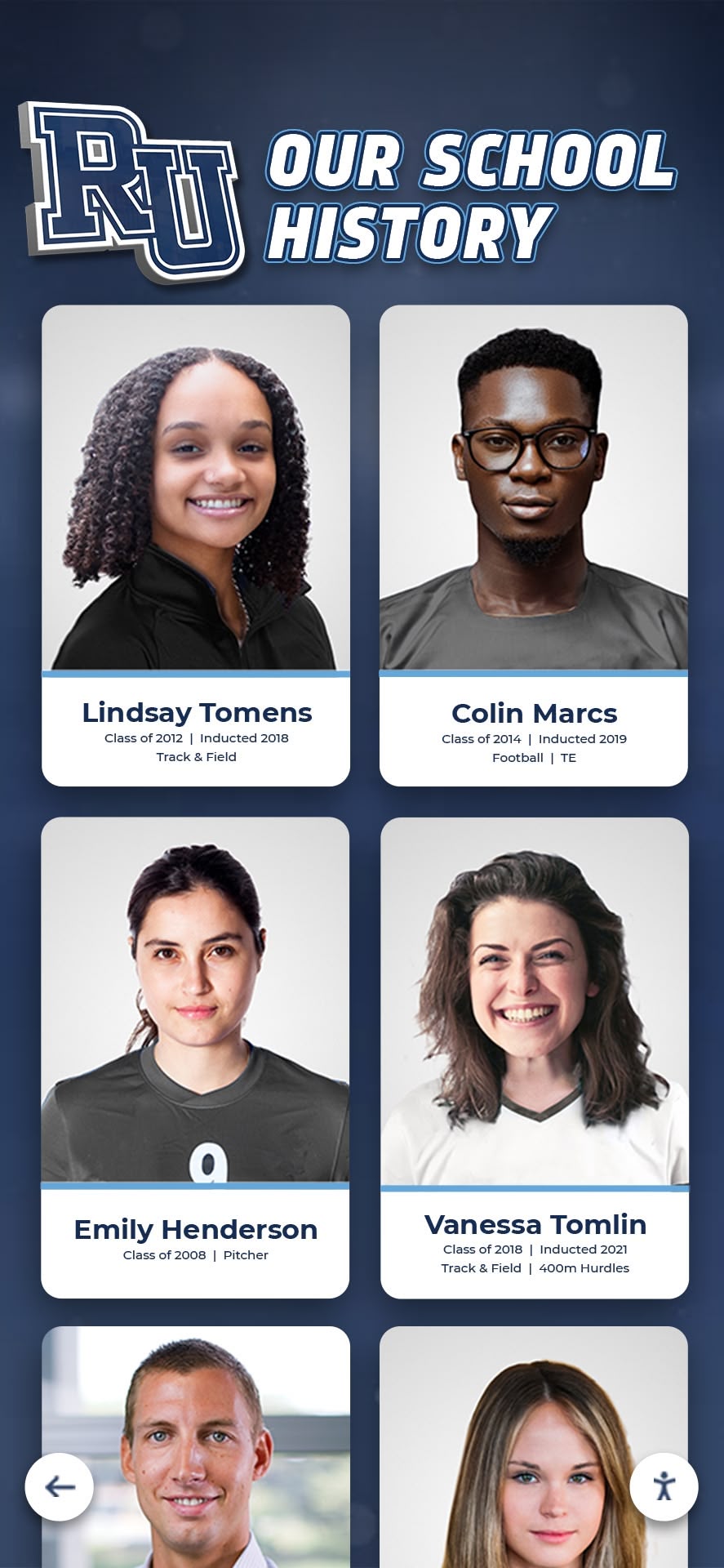
Technology Selection: Hardware and Software Considerations
Choosing appropriate technology ensures long-term success and satisfactory user experience.
Hardware Selection:
Commercial-grade touchscreen displays designed for high-traffic environments provide reliability:
- Display size: 55-75 inch screens appropriate for viewing distances
- Resolution: 4K displays ensuring crisp text and images
- Touch technology: Capacitive touchscreens supporting multi-touch gestures
- Durability: Commercial-grade components rated for extended operation
- Brightness: High brightness (500+ nits) for well-lit environments
- Orientation: Landscape or portrait based on space and content design
Installation Locations:
Strategic placement maximizes visibility and engagement:
- Rink entrance lobbies where players and families gather
- Athletic hallways connecting to hockey facilities
- Main school entrances for broader visibility
- Commons areas with high student traffic
- Booster club rooms or alumni spaces
Software Platform Requirements:
Comprehensive kiosk software should provide:
- Intuitive content management requiring no technical expertise
- Responsive design working across screen sizes
- Powerful search and filtering capabilities
- Media handling for photos, videos, and documents
- Cloud-based operation with automatic backups
- Analytics showing engagement and usage patterns
- Mobile-responsive online access
- Regular updates and technical support
Budget Planning and Funding Strategies
Understanding costs enables realistic planning while identifying funding sources supports implementation.
Cost Components:
- Hardware: Commercial touchscreen and mounting ($5,000-$12,000)
- Software platform: Recognition system with content management ($3,000-$8,000)
- Installation: Professional mounting and configuration ($800-$2,000)
- Content development: Initial profile creation and media preparation ($2,000-$5,000)
- Total initial investment: $10,800-$27,000
Annual Operating Costs:
- Software licensing and updates ($800-$2,500)
- Content management and additions ($500-$1,500)
- Technical support ($300-$800)
- Total annual: $1,600-$4,800
Funding Sources:
Massachusetts hockey programs typically fund recognition through:
- Booster club fundraising: Hockey booster organizations supporting program improvements
- Alumni contributions: Former players funding recognition of their era
- Corporate sponsorships: Local businesses supporting community programs
- Capital campaigns: Facility improvement initiatives including recognition components
- Foundation grants: Community foundations supporting youth athletics
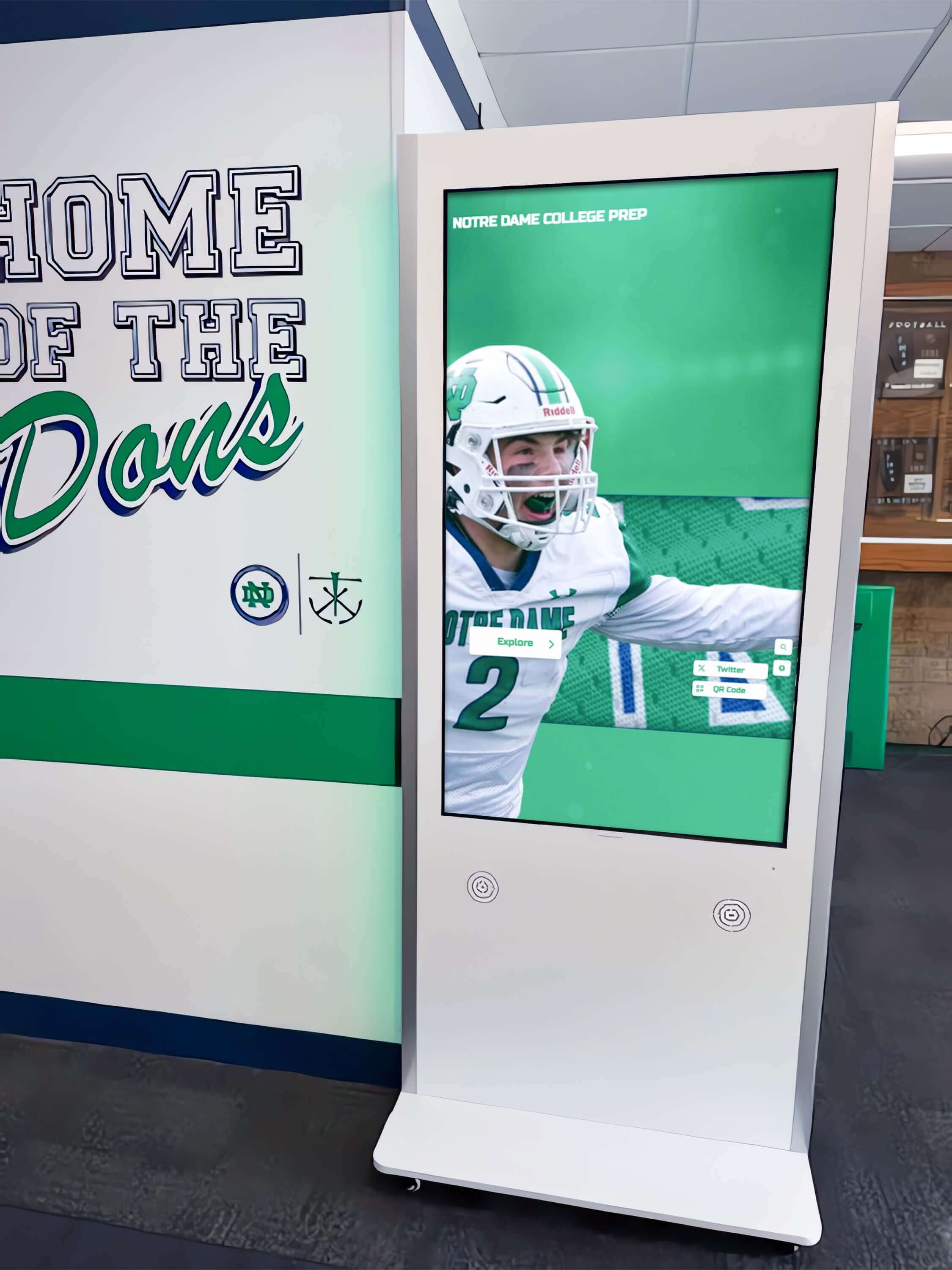
Content Strategies: Telling Compelling Stories
Effective recognition goes beyond listing names and achievements—it tells stories that create emotional connections and inspire audiences.
Individual Player Profiles
Comprehensive profiles document complete athletic journeys from freshman debut through post-graduation achievements.
Profile Components:
- High school career summary: Position, years played, team roles, notable qualities
- Statistical achievements: Goals, assists, points, plus/minus, save percentage, wins
- Awards and honors: All-state selections, team MVP, conference recognition, tournament achievements
- Championship participation: State tournament appearances, championship contributions
- Notable games: Memorable performances, clutch moments, defining achievements
- Post-graduation pathway: College commitment, professional career, current status
- Personal reflection: Quotes about high school experience, coaches, teammates, program impact
Championship Team Recognition
State tournament success represents program pinnacles deserving comprehensive documentation.
Team Recognition Elements:
- Season narrative: Regular season record, key victories, tournament path
- Complete roster: Every player regardless of playing time contribution
- Coaching staff: Head coach and assistants who prepared the team
- Key games: Detailed recaps of semifinal and championship victories
- Statistical leaders: Top scorers, goaltending, defensive contributors
- Media coverage: Contemporary newspaper articles and photos
- Video highlights: Championship game footage when available
- Championship context: Competition level, opponent quality, historical significance
Record Boards and Statistical Leaders
Digital record boards provide dynamic tracking of program performance standards.
Record Categories:
- Career records: Goals, assists, points, wins, saves, shutouts
- Single-season records: Same categories tracked annually
- Single-game records: Individual game performance benchmarks
- Team records: Best seasons, longest winning streaks, tournament performance
- Goaltending records: Save percentage, goals-against average, shutout streaks
Automatic Updates:
Modern systems can automatically update record boards as current seasons progress, ensuring content remains perpetually current without manual intervention for every statistical change.
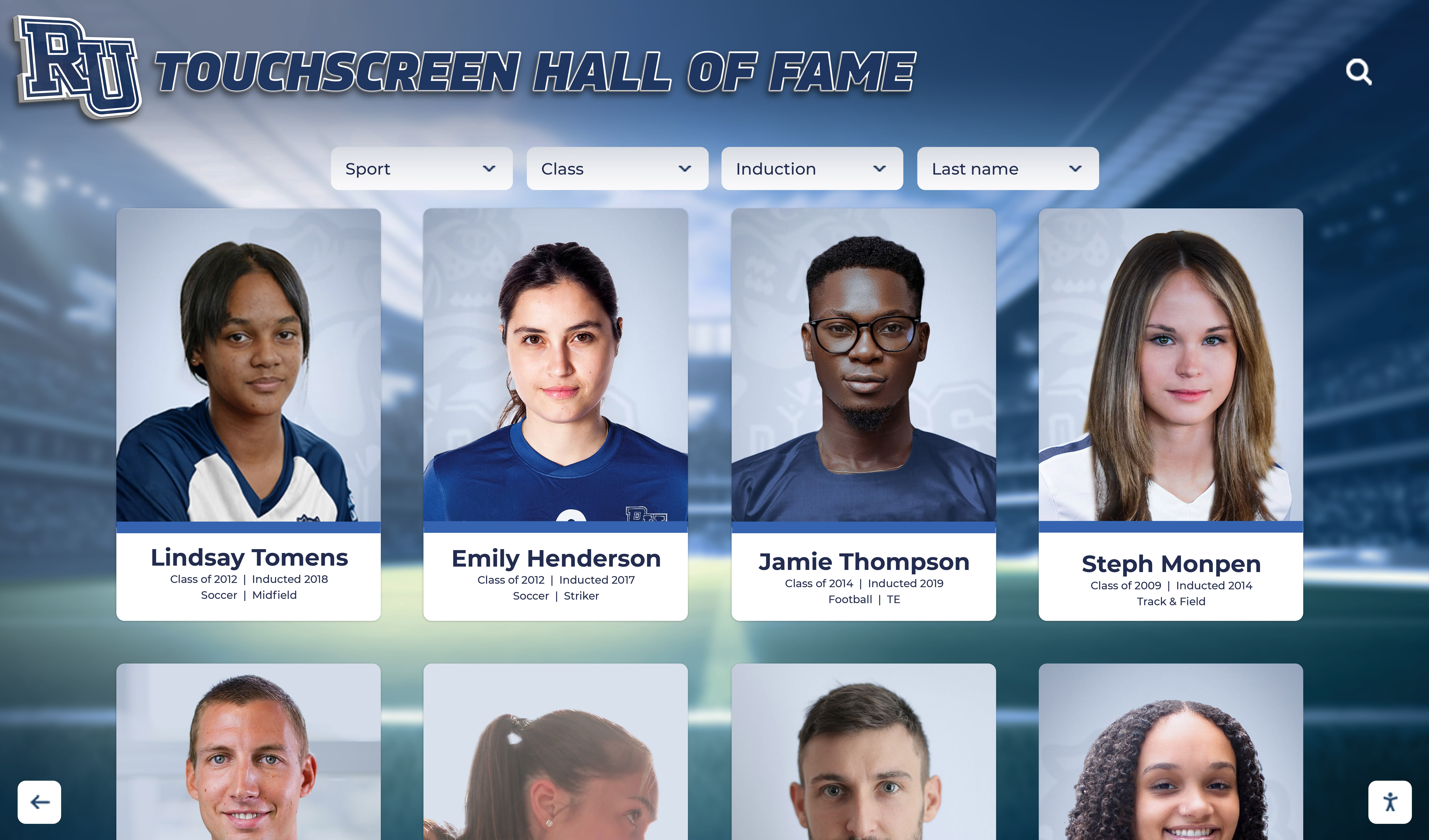
Integration with Broader Athletic Recognition
Hockey recognition typically exists within comprehensive athletic programs celebrating excellence across multiple sports.
Multi-Sport Recognition Systems
Single touchscreen platforms can showcase all athletic programs while allowing sport-specific exploration.
Organizational Approaches:
- Sport-specific sections accessible through main navigation
- Unified search across all athletic programs
- Consistent profile templates maintaining visual coherence
- Sport-specific content modules (hockey statistics vs. other sport metrics)
- Integrated record boards showing all-time athletic achievements
This comprehensive approach prevents hockey recognition from overshadowing other sports while celebrating athletic excellence holistically.
Academic Recognition Integration
Scholar-athlete recognition reinforces that athletic and academic excellence complement rather than conflict with each other.
Scholar-Athlete Content:
- Academic all-state honors alongside athletic achievements
- College academic success and major/degree information
- National Honor Society and academic awards
- Graduation outcomes and advanced degrees
- Post-athletic career success in professional fields
Integrated recognition demonstrates that complete student development includes both competitive excellence and academic achievement.
Alumni Network Connections
Recognition systems can integrate with alumni databases creating comprehensive community engagement platforms.
Network Features:
- Current contact information for alumni willing to connect
- Mentorship programs linking alumni with current students
- Career networking opportunities across graduated classes
- Alumni event coordination and communication
- Fundraising integration supporting ongoing program needs
Alumni engagement strategies transform recognition from retrospective celebration into active community building.
Massachusetts-Specific Considerations
Bay State hockey culture includes unique elements requiring understanding when planning recognition programs.
MIAA Tournament Structure and Recognition
The Massachusetts Interscholastic Athletic Association organizes state tournaments across multiple divisions creating championship opportunities for schools of varying sizes and competitive levels.
Division Structure:
- Division I, II, III classifications based on school enrollment
- Separate Catholic Conference tournament
- Central Mass, Boston area, Cape Cod regional structures
- Recognition should appropriately contextualize achievements within competitive divisions
Understanding tournament structure ensures recognition appropriately frames achievements within correct competitive context.
Historic Rivalries and Matchups
Certain Massachusetts hockey rivalries define programs and create memorable moments deserving special recognition.
Notable Rivalries:
- Catholic Conference battles (BC High vs. Catholic Memorial, Malden Catholic vs. St. John’s Prep)
- Public school geographic rivalries (town vs. town competitions)
- Regional powers competing for tournament supremacy
- Private vs. public matchups during state tournaments
Recognition content should highlight these rivalry games and traditional matchups that matter most to communities.
College Commitment Pathways
Massachusetts’s proximity to elite college hockey creates visible pathways from high school through Division I competition.
Local College Destinations:
- Hockey East programs: Boston College, Boston University, UMass, UMass Lowell, Northeastern, Merrimack
- ECAC programs: Harvard, Yale, Dartmouth, Brown, Union, Rensselaer
- Atlantic Hockey: Sacred Heart, Bentley, Holy Cross
- Other regional programs: Providence, Vermont, Maine, New Hampshire
Recognition highlighting these pathways demonstrates to current players that college hockey opportunities exist close to home.
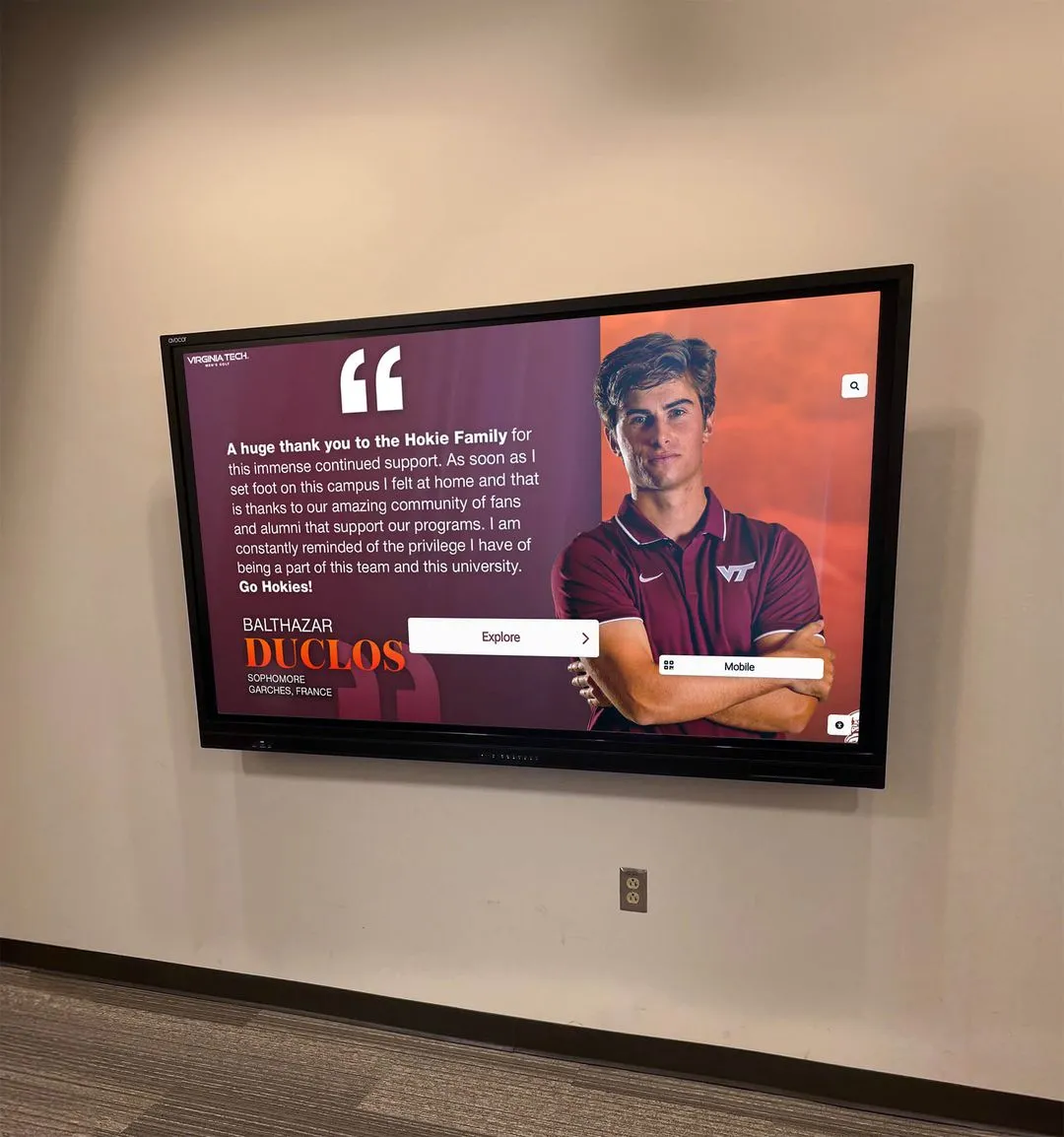
Measuring Recognition Program Success
Assessing recognition effectiveness helps justify investment while identifying improvement opportunities.
Quantitative Engagement Metrics
Digital platforms provide measurable data demonstrating actual usage.
Usage Statistics:
- Total interactions and session counts
- Average viewing duration per session
- Most frequently viewed profiles and content
- Search query patterns revealing visitor interests
- Peak usage times and seasonal trends
- Comparison across different content sections
These metrics demonstrate whether recognition achieves intended engagement goals.
Qualitative Impact Assessment
Beyond numbers, gather feedback from key stakeholders.
Stakeholder Perspectives:
- Current player surveys about awareness and inspiration
- Coach observations regarding team culture and pride
- Alumni feedback about feeling valued and recognized
- Prospective player/family reactions during recruiting visits
- Community member comments at games and events
- Media coverage of recognition program implementation
Direct feedback often reveals impact that quantitative metrics cannot capture.
Program Performance Indicators
Assess whether recognition supports broader program objectives.
Performance Measures:
- Recruiting success attracting top Massachusetts youth hockey talent
- Alumni engagement and giving metrics
- Community attendance at games and events
- Media coverage and program visibility
- Booster club membership and fundraising results
- Youth program enrollment feeding into high school teams
While many factors influence these outcomes, systematic assessment helps understand recognition’s contribution to program health.
Future Trends in Hockey Recognition Technology
Emerging technologies will continue enhancing recognition capabilities and engagement.
Enhanced Video Integration
Video increasingly becomes central to recognition experiences.
Video Capabilities:
- Automated highlight generation from game footage
- Integration with streaming archives and game film
- Player interview libraries building over years
- Virtual reality game experience recreations
- Live streaming integration for current season games
As video technology becomes more accessible and affordable, comprehensive video integration will become standard rather than exceptional.
Mobile Application Extensions
Dedicated mobile apps will complement physical touchscreen displays.
Mobile Features:
- Complete access to all recognition content from smartphones
- Push notifications for alumni achievements and program news
- Augmented reality features activating near physical displays
- Personal collections allowing users to favorite profiles
- Social features enabling community interaction
Mobile platforms ensure recognition remains accessible regardless of physical location.
Artificial Intelligence Enhancements
AI technologies will enable increasingly sophisticated recognition capabilities.
AI Applications:
- Automated statistical tracking and record board updates
- Natural language search understanding conversational queries
- Personalized content recommendations based on interests
- Automated photo tagging and organization
- Voice-activated navigation for accessibility
AI-powered personalization will create increasingly engaging, individualized recognition experiences.
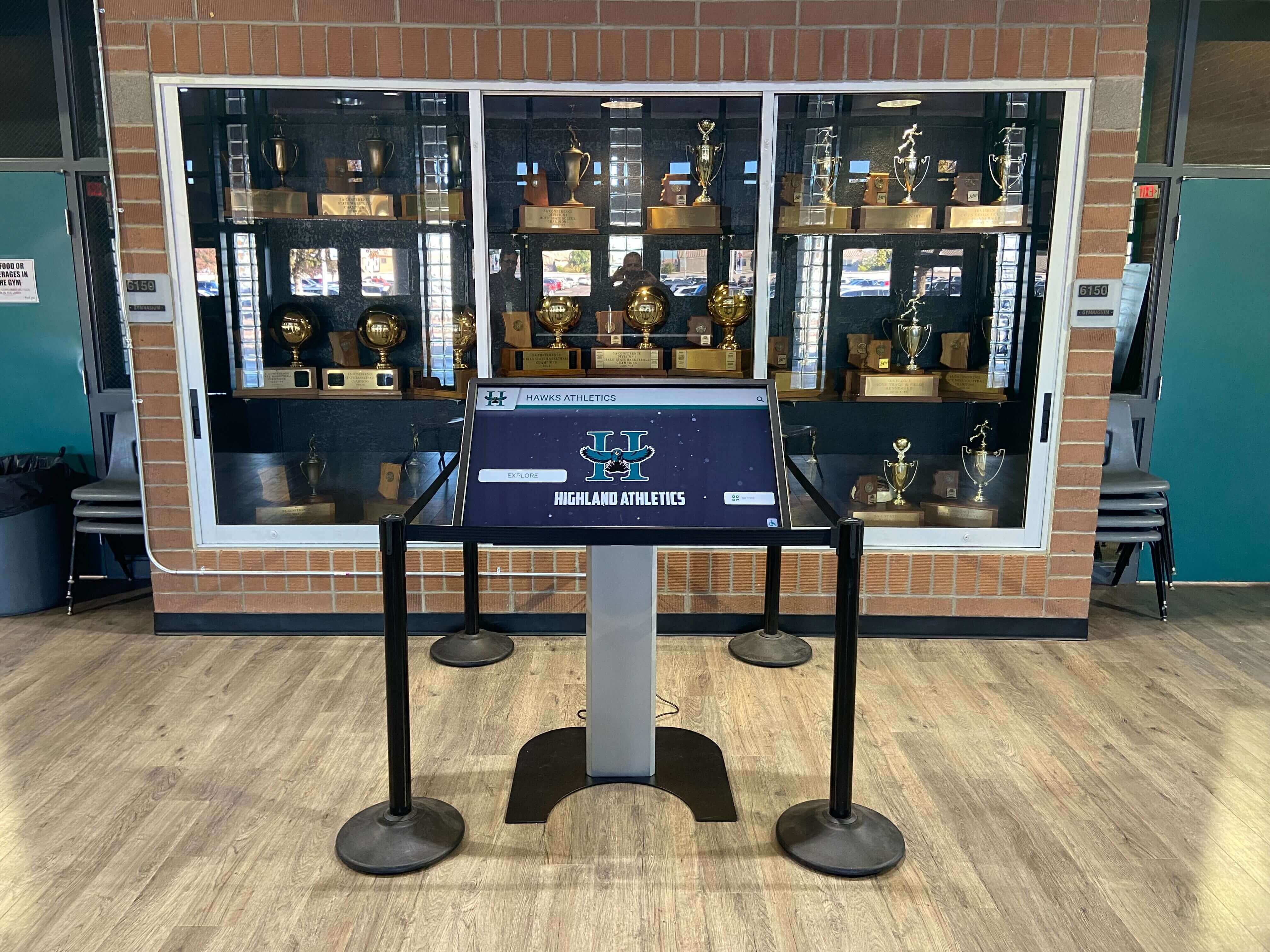
Conclusion: Celebrating Massachusetts Hockey Excellence
Massachusetts high school hockey programs build traditions spanning decades—championship teams, all-state athletes, college commitments, and countless memorable moments that define program identity and inspire new generations. These achievements deserve recognition matching their significance, celebration that honors past excellence while inspiring future achievement through comprehensive, engaging presentation.
Touchscreen recognition technology transforms how Massachusetts programs celebrate hockey tradition. Modern digital displays eliminate the space constraints of physical trophy cases, enable rich multimedia storytelling impossible with static plaques, provide user-friendly interaction encouraging extended exploration, allow easy content updates keeping recognition perpetually current, and extend accessibility beyond campus through online platforms.
Solutions like Rocket Alumni Solutions provide Massachusetts hockey programs with purpose-built platforms specifically designed for comprehensive athletic recognition. These systems combine intuitive content management with engaging user experiences, enabling programs to showcase unlimited achievements, integrate photos and videos bringing history to life, create searchable databases finding specific players or seasons instantly, and maintain professional presentation quality matching achievement magnitude.
Whether your Massachusetts program has decades of championship tradition or you’re building new recognition from scratch, modern touchscreen technology provides the capabilities hockey excellence deserves. From Catholic Conference powerhouses to emerging regional contenders, every program that has built tradition through hard work, dedication, and competitive excellence can appropriately celebrate that achievement while inspiring current and future players to add their own chapters to program history.
